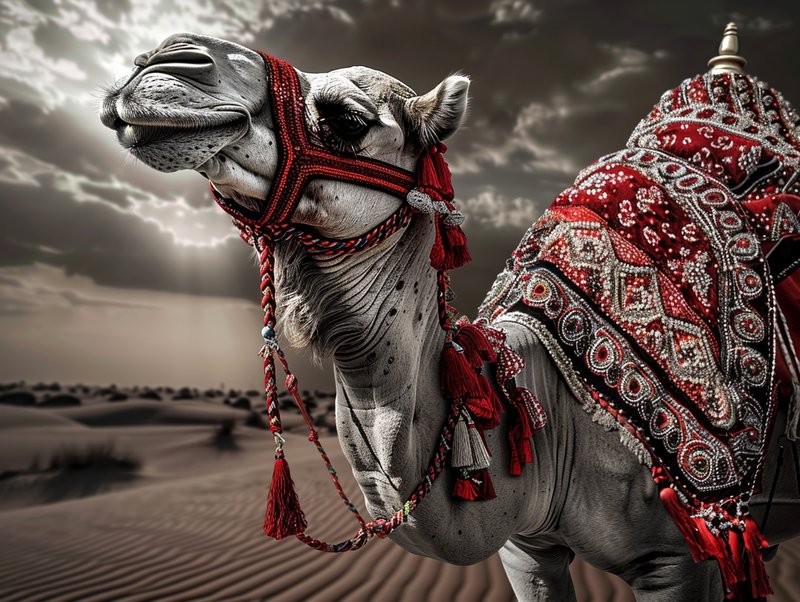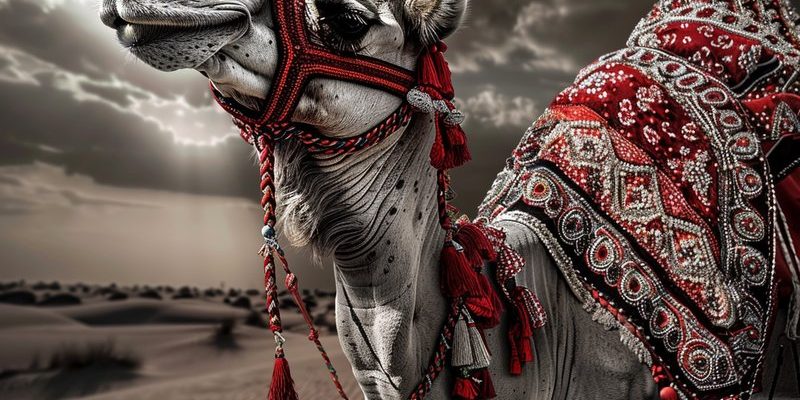
From ancient tales to modern symbolism, the camel holds a unique spot in the hearts and minds of various cultures. Whether it’s a symbol of endurance or a character in storytelling, camels have a rich tapestry of representation. So, why do they matter? Understanding how the camel is portrayed can help illuminate values, beliefs, and the humor of communities worldwide. Plus, it might just make you appreciate these sturdy animals a little more.
The Symbolism of Camels in Different Cultures
Camels often symbolize endurance and resilience, especially in regions where the climate can be unforgiving. In many desert communities, these animals are revered not just for their physical strength but also for their ability to persevere in extreme conditions. For instance, in Middle Eastern cultures, the camel is frequently seen as a vital companion, embodying a spirit of survival and adaptability.
In contrast, in Western cultures, the camel sometimes represents a more whimsical side. You might find them in children’s books or cartoons, depicted as silly and comical characters. This duality—to be both respected and celebrated—is a great example of how symbolism can shift dramatically across geographical and cultural lines. Here’s the thing: whether viewed as a hardworking companion or an amusing character, the common thread is the acknowledgment of their unique abilities.
Folklore and Myths Featuring Camels
Many cultures have woven camels into their folklore, often portraying them in stories that highlight their importance in human life. In Arabian tales, for instance, there are often stories of the *”Camel of the Year”*—a revered creature that embodies the qualities of loyalty, strength, and resourcefulness. Here, these animals become more than transportation; they are heroes in their own right.
Similarly, in African folklore, camels are sometimes depicted as wise creatures that hold secrets of the desert. One popular tale recounts how a clever camel outsmarts a greedy merchant. Through these stories, camels teach valuable lessons about integrity, cleverness, and respect for nature. You might be wondering how these narratives shape attitudes toward camels in regions where they play a pivotal role in everyday life. By personifying the camel, these tales foster a deeper connection between people and animals.
Camels in Art and Literature
Art and literature reflect our relationship with camels in a multitude of ways. From ancient pottery and frescoes to contemporary paintings and novels, camels often serve as symbols of trade, culture, and adventure. For instance, famous explorers like Marco Polo wrote extensively about their experiences with camels during his travels through the Silk Road.
In poetry, camels frequently symbolize a journey—both physical and metaphorical. Think about the imagery of caravans crossing deserts, evoking themes of exploration and discovery. In many narratives, camels serve as a bridge between different cultures, highlighting the interconnectedness of human experiences across time and space.
What’s truly beautiful is how these representations capture not just the camel itself but also the spirit of resilience that transcends individual stories, connecting people from various backgrounds.
Modern Representations of Camels
Fast forward to modern times, and camels have found their way into pop culture and advertising. Think about themes in movies, commercials, and even social media memes, where camels are often portrayed as quirky or funny. There’s a certain charm in how they are depicted, often poking fun at their unique appearance and behavior.
However, let’s not forget their ongoing significance in the regions where they thrive. In many Middle Eastern countries, camels are still celebrated during festivals, such as *Camel Racing*, which combines tradition with modern excitement. These events often showcase the beauty and athleticism of camels, reminding us that their cultural significance hasn’t faded over time.
In a way, the modern portrayal of camels balances humor and reverence, illustrating how deeply embedded they are in human culture.
The Role of Camels in Sustainable Practices
In many cultures, camels aren’t just seen as animals; they are integral to sustainable living. For example, in arid regions, camels have adapted to conserve water and traverse long distances without a drink. This natural ability is a model for eco-conscious practices in modern society.
Some communities still depend on camels for transportation and agricultural practices, showcasing a sustainable way of life that has existed for centuries. By promoting the use of camels, communities can preserve traditions while minimizing their environmental footprint. Isn’t it interesting how these animals can symbolize resilience not just in folklore but also in real-world sustainability efforts?
Camels in Festivals and Celebrations
Across various cultures, camels feature prominently in festivals and celebrations. In the Middle East, events like the *King Abdulaziz Camel Festival* celebrate the beauty and heritage of these animals, drawing thousands of visitors. Competitions feature the best camels, highlighting their grace and elegance.
In contrast, some African cultures hold camel races as part of their festive traditions, transforming these strong animals into symbols of community spirit and joy. These events often bring people together—uniting families, friends, and sometimes even rival communities in a friendly competition.
Through these celebrations, camels take center stage, reinforcing their role not just as beasts of burden but as crucial components of cultural identity and social bond.
It’s clear that camels are more than just fascinating creatures with unique adaptations; they are woven into the fabric of culture and folklore around the world. From being symbols of resilience to starring in stories that teach us valuable lessons, camels hold a special place in our hearts and minds.
Understanding how the camel is represented helps us appreciate the rich tapestry of human experiences. Next time you come across a camel—whether in a story, artwork, or at a festival—take a moment to reflect on its significance. These remarkable creatures remind us of the connections we share with nature and each other, bridging gaps between cultures and traditions. So here’s to the camel—a true symbol of endurance, humor, and community spirit!

